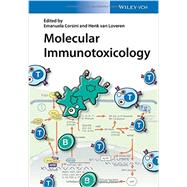The human immune system is constantly exposed to chemical contaminants, whether from food, water or air. Some chemicals directly elicit an immune response, while others indirectly activate or deactivate components within the immune system. Thus when tracking or predicting the effect of a chemical on the immune system, many different pathways and modes of action need to be considered.
Following an introduction to the various pathways and toxicity mechanisms from a systemic perspective, the main part of this comprehensive reference surveys individual molecular mechanisms of important immunotoxicants, from PAHs to biopharmaceuticals, and from receptor-mediated toxicity to nanoparticle toxicity, using analyses based on molecular effects rather than on animal models.
Taken together, the knowledge presented here provides an up-to-date overview of this hot topic that can be directly applied to the prediction and characterization of immunotoxic effects in drugs, chemicals, and environmental contaminants.








